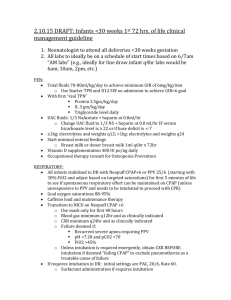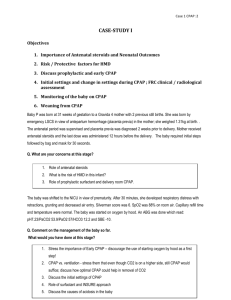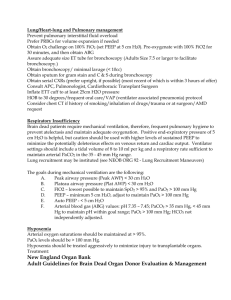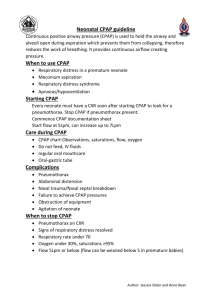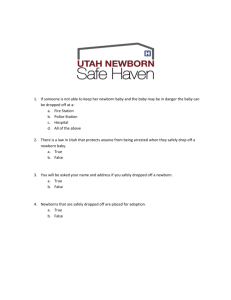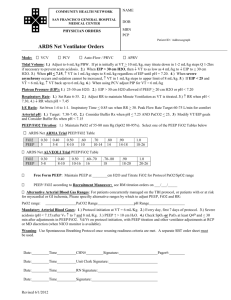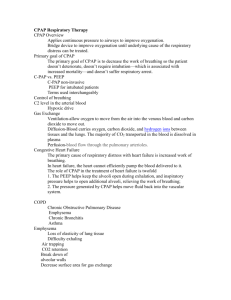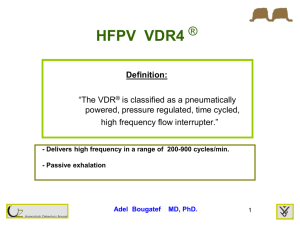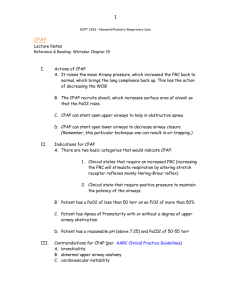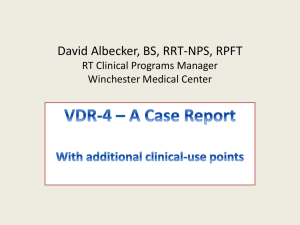case study
advertisement
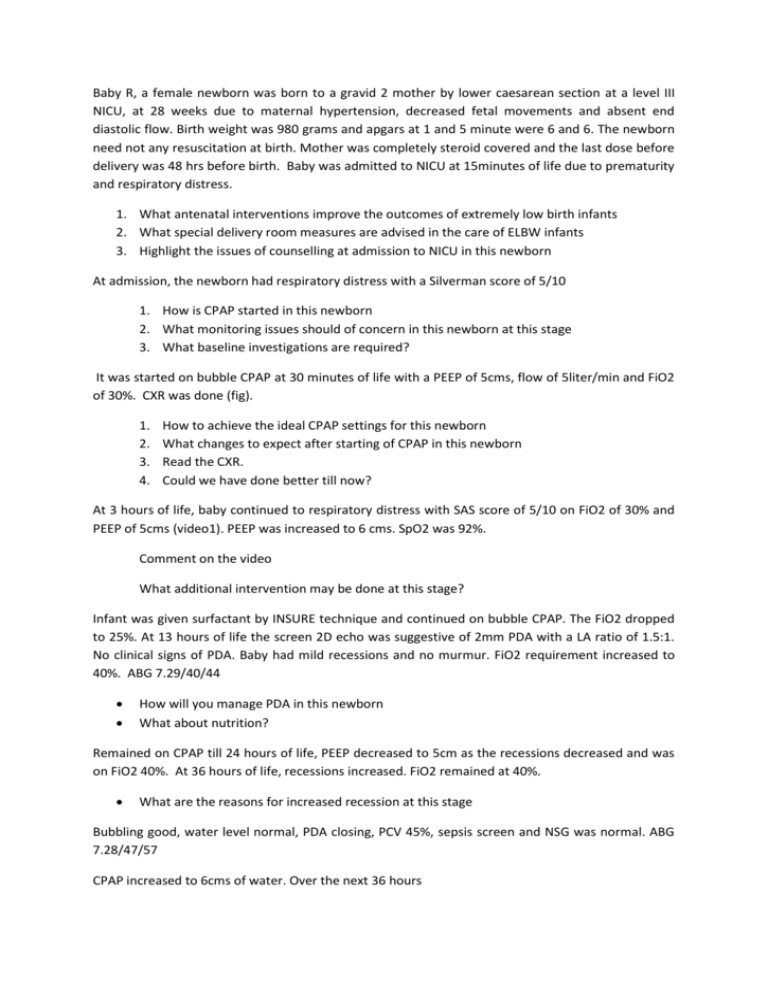
Baby R, a female newborn was born to a gravid 2 mother by lower caesarean section at a level III NICU, at 28 weeks due to maternal hypertension, decreased fetal movements and absent end diastolic flow. Birth weight was 980 grams and apgars at 1 and 5 minute were 6 and 6. The newborn need not any resuscitation at birth. Mother was completely steroid covered and the last dose before delivery was 48 hrs before birth. Baby was admitted to NICU at 15minutes of life due to prematurity and respiratory distress. 1. What antenatal interventions improve the outcomes of extremely low birth infants 2. What special delivery room measures are advised in the care of ELBW infants 3. Highlight the issues of counselling at admission to NICU in this newborn At admission, the newborn had respiratory distress with a Silverman score of 5/10 1. How is CPAP started in this newborn 2. What monitoring issues should of concern in this newborn at this stage 3. What baseline investigations are required? It was started on bubble CPAP at 30 minutes of life with a PEEP of 5cms, flow of 5liter/min and FiO2 of 30%. CXR was done (fig). 1. 2. 3. 4. How to achieve the ideal CPAP settings for this newborn What changes to expect after starting of CPAP in this newborn Read the CXR. Could we have done better till now? At 3 hours of life, baby continued to respiratory distress with SAS score of 5/10 on FiO2 of 30% and PEEP of 5cms (video1). PEEP was increased to 6 cms. SpO2 was 92%. Comment on the video What additional intervention may be done at this stage? Infant was given surfactant by INSURE technique and continued on bubble CPAP. The FiO2 dropped to 25%. At 13 hours of life the screen 2D echo was suggestive of 2mm PDA with a LA ratio of 1.5:1. No clinical signs of PDA. Baby had mild recessions and no murmur. FiO2 requirement increased to 40%. ABG 7.29/40/44 How will you manage PDA in this newborn What about nutrition? Remained on CPAP till 24 hours of life, PEEP decreased to 5cm as the recessions decreased and was on FiO2 40%. At 36 hours of life, recessions increased. FiO2 remained at 40%. What are the reasons for increased recession at this stage Bubbling good, water level normal, PDA closing, PCV 45%, sepsis screen and NSG was normal. ABG 7.28/47/57 CPAP increased to 6cms of water. Over the next 36 hours 48 hrs PEEP 6m FiO2 45% SAS 3/10 60 hrs PEEP 5cm FiO2 21% SAS 3/10 72 hours PEEP 4cm FiO2 21% SAS 1/10 Weaned off from CPAP at 84 hours of life. CXR Day 1 How do wean a baby on CPAP Role of ABG and CXR in the management of RD for a baby on CPAP
